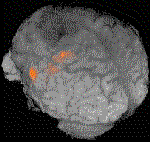

 |
 |
New Comprehensive Interpretive System and Norms for the CVES!
Vocational and Educational Profile Analysis and Reporting System (VEPARS)Purchase VEPARS from McCarron-Dial Systems
VEPARS is a new software interpretive system that analyzes data derived from history*, behavioral observations and standardized tests collected by the Comprehensive Vocational Evaluation System (CVES) for persons with visual impairment or blindness. The VEPARS system provides in-depth interpretation of the major CVES factors (verbal-spatial-cognitive, sensorimotor and emotional-coping), as well as vocational interests and academic achievement. It permits the input of behavioral observations made during the assessment in addition to historical information* obtained from interview and records. A thorough narrative report of the individual's results is generated including factor interpretations, strengths and limitations, vocational and residential potential, occupational choices and recommendations. Additional data and profile reports may be generated.
The following highlights the important features of VEPARS:The VEPARS system includes embedded norms from over 1,800 cases of individuals who are blind or visually impaired with no other known disability.
VEPARS converts all CVES raw data internally to standard scores for interpretation.
New academic achievement norms are available for contracted braille readers (grade II).
Pull down windows for entering secondary disabilities and/or etiologies of visual-impairment/blindness are included.
Inputs for level of visual function, educational level, age at onset of visual loss and ethnicity also allow for selected adjustments to cognitive, sensory, motor and adaptive behavioral scores that may be affected by these issues.
Combinations of CVES data are translated to specific traits such as Attention-Concentration, Short and Long Term Memory, permitting more detailed interpretation of the CVES factors.
Vocational section allows for any Holland one, two or three code input for occupational selection.
Occupations selected on the basis of vocational interest may be further matched by the individualís performance on specific traits.
The Vocational section is directly linked to O*Net for convenience of occupational exploration.
The VEPARS narrative report details all interpretation in a clear, concise manner with excellent sentence flow.
Data and profile reports provide a quick and useful reference for consumer and counselor feedback sessions.
More than two hours in report writing time can be saved.
A help system is embedded in the program and a tutorial program is available.
View sample VEPARS report
View sample profile report
For children and adolescents ages 14 to17, an add-on feature called the Profile Analysis for Children (PACS) provides specific educational recommendations for transitional consumers.**
PACS Reports
The PACS program (optional module necessary) defines 13 intellectual/achievement and 10 perceptual/motor traits operationally defined from the CVES data. The PACS program generates two reports: report of trait values; and the report for transitional management. The reports identify specific intellectual/achievement and perceptual/motor recommendations for students 14 years to 18 years of age and are primarily useful in the school setting to aid in developing the Individual Education Plan (IEP). The traits values report displays a profile of the consumer’s performance on the intellectual/academic achievement and perceptual/motor traits. The report for transitional management lists and defines the consumer’s specific deficits, describes the functional implications (adverse affects of the deficits to success in the educational process) resulting from the deficits and lists specific recommendations for remediation or accommodation of the deficits.
Trait Values Report
The trait values report displays indentifying information including the consumer’s name, age, gender, handedness, date of evaluation, evaluator’s name and evaluation number. The evaluation number located at the top of the report represents whether this is the person’s first, second, third, etc., time to be evaluated.
Below the demographic information are two bar graphs that display the consumer’s performance levels on the intelligence/academic achievement and perceptual/motor factor traits. Bars presented in red on the computer display indicate the trait is not a deficit, while those presented in blue indicate deficits. Deficits are operationally defined as trait standard score values that are significantly below the overall average of all traits included in the factor. Each trait standard score is presented to the right of the bar. As with all standard scores in the system, the mean or average score equals 100, while a standard deviation from the mean equals 15. The trait values report is a convenient and easy method to visually communicate the consumer’s strengths and limitations.
Transition Management Report
The transition management report includes consumer information such as name, age, gender, case ID number, address and telephone number. If entered, this subsection of the report also displays the VR phase (point in the rehabilitation process), evaluator’s name and for whom the report was prepared. Furthermore, information regarding the consumer’s optometric measures, visual fields, etiology or diagnoses of visual impairment and secondary disabilities/conditions is displayed if previously entered by the evaluator.
The next subsection includes suggestions to staff for transitional planning. This paragraph simply defines the limits of the reports use and identifies the general content of the report.
The next two subsections, intellectual/academic achievement and perceptual/motor, include identified deficit traits, if any, a definition of the trait and a description of functional limitations imposed on the educational process by a deficit in the trait.
Below each deficit trait definition and description of functional limitations is a list of specific recommendations that may help remediate or accommodate the affects of the deficits.
The evaluator is cautioned to edit the recommendations as appropriate. It is often helpful to select only five to eight recommendations per deficit, based on the person’s general educational program and special needs, to include in the final report.
* The history module will be available in late 2014 at an additional cost.**The PACS is currently available at an additional cost.
Purchase VEPARS and/or PACS from McCarron-Dial Systems.
System Requirements:Windows XP, Windows Vista, Windows 7 and Java Runtime Environment (JRE) version 1.6 or later (32 or 64 bit) OR Macintosh OS10.5 or later and Java version 1.6 (64 bit)
Microsoft Office Starter 2010, Microsoft Word/Office 2007 or later, OpenOffice 3.0 or later for review and printing of reports
Internet connectivity for linking to O*Net
Interactive support requires remote access to your computer (conducted with the user able to watch).
VEPARS replaces the older EPARS software program, which has been discontinued. Since EPARS is incompatible with Windows 7 (64 bit) and Windows 8, support will be discontinued for the program after June 30, 2013.Purchase VEPARS and PACS from McCarron-Dial Systems.